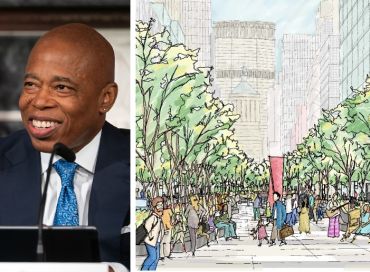NYC Lists 46 Buildings in Pipeline for Office-to-Residential Conversion
By Mark Hallum January 17, 2024 3:13 pm
reprints
The real estate industry in New York may not be holding its breath for a 421a replacement since Gov. Kathy Hochul’s vague announcement earlier this week, but an infusion of housing could be coming regardless.
The Office Conversion Accelerator, launched by Mayor Eric Adams’s administration in August, has 46 buildings enrolled in the program with the landlords hoping to reposition those properties for residential use, Axios first reported.
The program aims to help building owners convert office space to residential more easily by easing some restrictions and offering a single point of contact for owners going through the rezoning process.
Work to convert four of the buildings in the accelerator program has already begun and could bring 2,100 units on the market in the near future, according to the city. They include 25 Water Street’s $535.8 million overhaul in the Financial District, both 90 John Street and 17 Battery Place owned by The Moinian Group, and the Vanbarton Group’s $273 million renovation of 160 Water Street.
“We are reimagining our central business districts by helping convert empty offices into affordable homes, upgrading outdated commercial spaces, creating vibrant new public spaces, and making bold investments in growing industries like life sciences and the green economy,” Adams said in a statement. “As we work with our partners across levels of government and in the private sector, New York City can serve as a model for cities across the country and the world for using creative policymaking and smart planning to deliver a strong, inclusive recovery.”
The city has faced a housing shortage, as construction of multifamily properties slowed in recent years. The Adams administration has looked to aging, empty offices around Manhattan to help ease the burden.
Aside from the accelerator program, Adams has also started a process to rezone parts of Midtown that will help allow more office-to-residential conversions in the neighborhood.
Under prior zoning rules, office-to-residential conversions were limited to anything built after 1961 or 1977, depending on the location. But, as part of the accelerator program, the Adams administration made anything built before 1990 eligible as well.
Any type of housing is now allowed under the plan, including supportive housing, shared housing and dorms, according to the mayor.
Landlords may be getting anxious for answers to the riddle that has been the remote work trend as 77.8 million square feet of office sat empty in Manhattan at the end of the fourth quarter of 2023, an increase compared to the 69.9 million square feet that was empty during the same period in 2022, according to a report from Transwestern.
The five-year average for Manhattan office vacancy is 55.4 million square feet, according to the report.
Mark Hallum can be reached at mhallum@commercialobserver.com.


